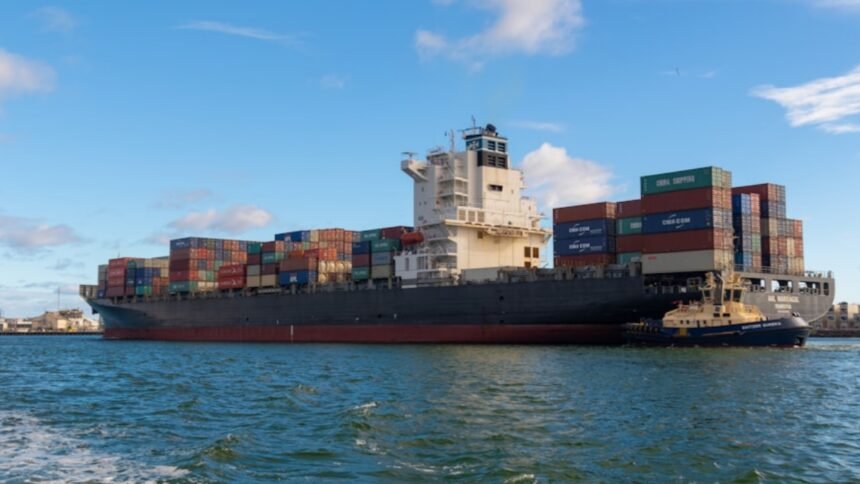Introduction to Freight Shipping
Freight shipping is the backbone of global commerce, intricately woven into the fabric of supply chains that span continents. Responsible for the seamless flow of goods, freight shipping encompasses everything from transporting essential raw materials to delivering consumer products. Whether moving loads from California to Canada or traversing any other international route, the efficient transportation of goods is key to maintaining economic circulation and meeting market demand. In today’s fast-paced world, businesses increasingly recognize the importance of optimizing their freight shipping strategies to meet evolving consumer expectations and market dynamics.
Efficient freight shipping extends beyond essential cost savings, influencing multiple facets of a company’s operations. A well-executed logistics plan can enhance customer satisfaction by ensuring timely product delivery and bolstering brand image and loyalty. Moreover, efficient shipping methods give businesses a competitive edge, allowing them to respond swiftly to market trends and seize new opportunities. Understanding the finer details of freight operations has thus become crucial for businesses aiming to streamline their supply chains and achieve sustainable growth amidst these dynamic challenges.
The Importance of Planning and Forecasting
Planning and forecasting are pivotal elements in the quest for shipping efficiency. Proper demand forecasting enables businesses to precisely predict future inventory needs, minimizing the risk of overstocking and stockouts. This leads to optimized resource allocation, reducing holding costs and preventing sales losses due to inventory shortages. Reliable demand forecasting techniques can significantly steer business operations toward efficiency without encountering unnecessary disruptions.
Effective planning also leads to more accurate budgeting and financial planning. Companies can avoid unexpected costs and delays by anticipating and strategically preparing for potential challenges. Moreover, robust demand forecasts empower businesses to negotiate better rates and terms with their shipping partners, facilitating more cost-effective and streamlined logistics practices. Thus, a well-structured planning framework lays the foundation of a robust supply chain, aligning operational activities with overarching business goals.
Selecting the Right Shipping Partner
Choosing the right shipping partner is akin to selecting a strategic teammate for a complex mission—integrity, reliability, and competence are essential. A reliable shipping partner must provide comprehensive solutions tailored to specific logistics needs. Evaluating potential partners involves scrutinizing their industry experience, network coverage, technology integration, and customer service standards. Transparent communication and efficiency in delivery become key indicators of a competent logistics partner known for delivering value and quality.
The benefits of fostering long-term partnerships with reliable shipping allies are multifaceted. Long-standing relationships reduce operational disruptions and enhance creative problem-solving strategies through collaboration. Committed partnerships drive innovation within logistics operations, allowing businesses to explore novel approaches to overcome logistics challenges and streamline processes. When trust and cooperation are prioritized, both parties flourish together in achieving mutual growth and shared objectives.
Embracing Technology for Better Tracking
As digital innovation reshapes industries, technology has become an indispensable ally in freight shipping. Advanced tracking systems offer real-time insights into the location and status of shipments, enhancing transparency and accountability. The latest advancements in shipping technology have revolutionized how businesses monitor and manage their logistics processes, enabling them to deliver timely and efficient services.
Integrating sophisticated tracking tools into logistics operations significantly improves delivery accuracy and customer satisfaction. Such technologies empower businesses to promptly address delivery issues, optimize shipping routes, and minimize delays. Furthermore, the data from these technologies provides valuable insights for improving decision-making processes and driving continuous improvement within logistical operations. As technology evolves, businesses embracing these advancements are better positioned to remain agile and competitive.
Understanding Shipping Regulations
Navigating the labyrinth of shipping regulations is crucial to maintaining compliance, avoiding penalties, and ensuring logistical success. Regulations often encompass diverse laws that vary significantly between countries and regions, impacting cross-border shipping routes and related operations. Businesses must stay informed about the rules that govern their routes, including customs requirements, tariffs, documentation needs, and trade agreements.
Compliance prevents legal issues and financial penalties and builds trust with customers and supply chain partners. Proactively staying abreast of regulatory changes, conducting thorough document checks, and ensuring requisite certifications can save valuable time and safeguard the business’s reputation. Businesses that prioritize regulatory knowledge and adherence contribute towards smoother operations and reliable logistics services.
Eco-Friendly Shipping Practices
With mounting concerns over environmental impact, sustainable freight shipping has increasingly gained traction as a business imperative. Implementing eco-friendly practices can meaningfully reduce carbon footprints while enhancing brand reputation by demonstrating a commitment to environmental stewardship. These practices hold immense significance in contributing to the global effort to reduce environmental impact and preserve limited resources.
Simple yet effective changes—such as optimizing packaging to reduce waste, employing fuel-efficient transportation methods, and consolidating shipments—can make a substantial difference. Additionally, collaborating with shipping partners committed to sustainable practices and integrating renewable energy sources into supply chain operations can enhance environmental outcomes. As sustainability becomes an essential pillar of logistics strategies, businesses are better positioned to meet evolving consumer expectations and fulfill regulatory demands.
Real-Life Success Stories
Several companies are examples of businesses that have successfully navigated the complexities of freight shipping, setting benchmarks for others to follow. By strategically investing in efficient logistics solutions, businesses have improved their bottom lines and elevated customer loyalty and brand reputation through timely and reliable deliveries.
Take, for instance, the success story of a prominent furniture company that restructured its logistics operations to enhance efficiency, minimize costs, and improve delivery speeds. This transformation had a notable impact on customer satisfaction and market share. Such success stories illustrate that strategic shipping solutions fulfill original business objectives and open doors to untapped opportunities and expansive growth in the competitive marketplace.
Conclusion
In summary, efficient freight shipping remains vital to today’s intricate global supply chains, offering numerous benefits for businesses prioritizing agility and efficiency. By honing planning, leveraging technology, staying compliant with regulations, and adopting sustainable practices, businesses can significantly optimize their logistics operations and catapult their success. As commerce continues to evolve, remaining adaptable and innovative in freight shipping strategies becomes paramount to achieving continued success within the dynamic business landscape.

